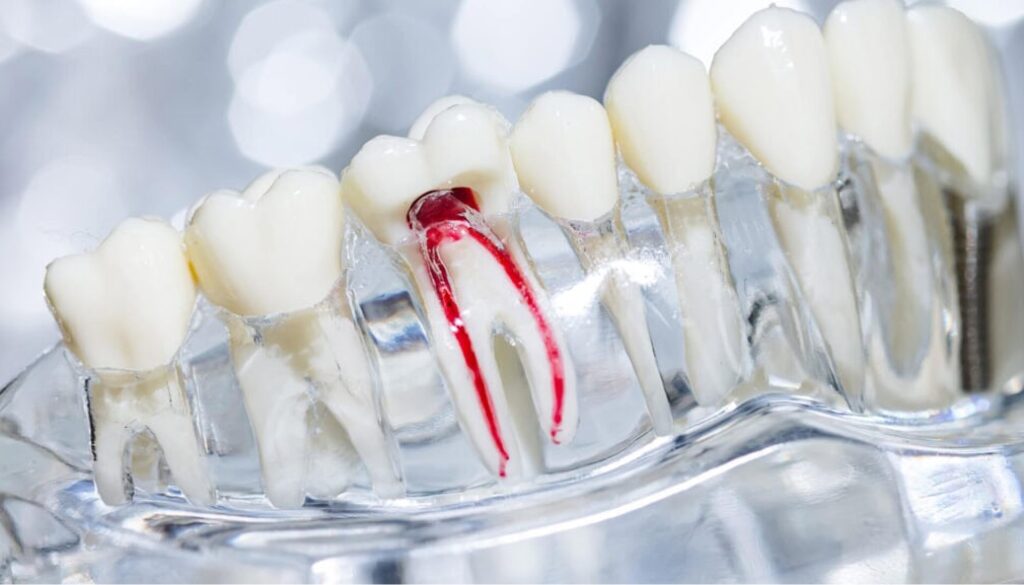Root canal treatment is one of the most common dental procedures performed worldwide, but many patients worry about the time it takes and what happens during the process. Whether you have been told you need a root canal or you are researching because of persistent tooth pain, understanding the complete timeline can help ease your mind. In this comprehensive guide, we will walk you through every stage of the root canal procedure, explain how long it takes, highlight factors that influence the duration, and discuss what to expect before, during, and after treatment.
What is a Root Canal Treatment?
A root canal treatment, also called endodontic therapy, is a dental procedure designed to save a natural tooth that has an infected pulp. Inside every tooth, beneath the enamel and dentin layers, lies the pulp chamber. This soft tissue contains blood vessels and nerves that keep the tooth alive. When bacteria enter the pulp due to deep decay, cracks, or trauma, the result is often severe pain and swelling.
Rather than extracting the tooth, a root canal involves removing infected or damaged tissue from inside your tooth, carefully cleaning the empty space, and sealing it to prevent further damage or infection. This helps preserve your natural bite, maintain oral health, and protect the surrounding area from further complications.
Why Do You Need a Root Canal?
You may need a root canal if you are experiencing symptoms of a tooth infection or a damaged tooth. Some common signs include:
- Persistent tooth pain or sensitivity to hot and cold
- Swelling around the tooth and the surrounding area
- Visible changes such as a darkened tooth
- Pain when chewing or applying pressure
- Abscess or pus near the gums
If left untreated, an infected pulp can lead to severe infection, bone damage, or even loss of the tooth. A root canal procedure is often the best way to save your natural tooth and prevent the infection from spreading to other teeth or tissues.
Factors That Affect How Long a Root Canal Takes
The answer to how long does a root canal take depends on several factors. While most procedures last between 60 and 120 minutes, the exact time can vary.
Type of Tooth (Molar, Canine, Front Teeth)
- Anterior teeth (front teeth) usually have one canal, making treatment faster at around one hour.
- Canine teeth often have one or two roots and take slightly longer.
- Molar teeth contain multiple roots and canals, so they can take up to 90 to 120 minutes.
Severity of Tooth Infection
- A mild infection requires less cleaning.
- A severe infection may require multiple visits to ensure all bacteria are removed.
Number of Roots and Canals
The more complex the root structure, the longer the procedure. Molar teeth typically have three or four canals compared to one in front teeth.
Dentist or Endodontist Expertise
An endodontist, a dentist who specialises in root canal therapy, may complete the treatment more efficiently than a general dentist.
Root Canal Appointment: Step-by-Step Timeline
Here is the complete breakdown of what happens during your root canal appointment.
Step 1: Initial Consultation and X-Rays
Your dentist performs a thorough examination and takes X-rays to determine the extent of infection. The treatment plan is explained in detail.
Step 2: Local Anaesthesia and Tooth Preparation
A local anaesthetic numbs the affected tooth and the surrounding area. A dental dam is placed to keep the tooth clean and isolated. A small hole is drilled to access the pulp chamber.
Step 3: Cleaning and Shaping the Root Canal
The infected pulp is removed. The dentist uses small instruments to clean and shape the canal. Antibacterial solutions may be applied to eliminate remaining bacteria.
Step 4: Filling the Canal with Biocompatible Material
Once cleaned, the canal is filled with a biocompatible material, usually gutta-percha. This seals the canal and prevents reinfection.
Step 5: Temporary Filling and Permanent Crown
A temporary filling is placed to close the opening. In a second visit, a permanent crown or other restoration is fitted to strengthen the treated tooth.
Single Visit vs Multiple Visits – What’s Better?
One of the most common questions patients ask is whether root canal therapy can be completed in a single visit or if multiple visits are necessary. The answer depends on the condition of the affected tooth, the severity of the infection, and the dentist’s recommendation.
- Single Visit Root Canal: This is usually possible for front teeth or teeth with simple root structures. If the infection is mild and there are no complications, the dentist may be able to complete the cleaning, shaping, and filling in one appointment. Many patients prefer this option as it saves time and avoids repeated anaesthesia.
- Multiple Visits Root Canal: In cases of severe infection or complex molar teeth, the dentist may recommend two or more appointments. This allows them to thoroughly disinfect the canals and ensure no bacteria remain. A temporary filling is placed after the first session, and the tooth is permanently restored in the second visit.
While both approaches are effective, multiple visits are often more cautious for complicated cases, ensuring long-term success.
How Long Does Recovery from a Root Canal Take?
Root canal recovery is typically straightforward, but it is important to follow your dentist’s instructions. Most patients return to normal activities within a day, although complete healing may take longer.
Immediate Aftercare
After your appointment, you may feel mild soreness or sensitivity in the treated tooth and surrounding area. This is normal and usually subsides within a few days. Painkillers recommended by your dentist can help manage discomfort.
Managing Mild Soreness and Sensitivity
Avoid chewing hard foods on the treated tooth until a permanent crown is fitted. Sticking to softer foods such as soups, yoghurt, and mashed vegetables helps protect the tooth. Good oral hygiene, including gentle brushing and flossing, is essential to prevent further complications.
Eating Soft Foods During Healing
During the first few days, you should choose soft foods that require minimal chewing. Examples include scrambled eggs, smoothies, rice, pasta, and well-cooked vegetables. Avoid sticky or crunchy foods that could disturb the temporary filling.
Most patients notice significant improvement within a week. Once the permanent restoration is fitted, the tooth should feel and function like a natural tooth again.
Possible Complications and How to Avoid Them
Root canal therapy has a high success rate, but complications can occur if aftercare is not followed. Possible issues include:
- Persistent infection if bacteria remain inside the canal
- Cracks or fractures in the treated tooth without a permanent crown
- Discomfort due to the temporary filling becoming loose
- Rare cases of swelling or secondary infections
To avoid these problems, always attend follow-up appointments, ensure your permanent restoration is fitted promptly, and practise good oral hygiene. If you experience severe pain, swelling, or fever after treatment, contact your dentist immediately.
Benefits of Root Canal Therapy Over Extraction
Some patients wonder whether it would be easier to remove the tooth altogether. However, preserving a natural tooth has many benefits:
- Maintains proper bite and alignment, preventing strain on other teeth
- Saves the natural tooth structure, avoiding the need for implants or bridges
- Protects surrounding soft tissue and bone health
- Provides a long-term solution with proper care and restoration
Root canal treatment, when done correctly, allows you to keep your natural smile and avoid further dental complications.
FAQs
1. How long does a root canal take on average?
Most root canals take between 60 and 120 minutes, depending on the tooth and infection severity. Front teeth are quicker to treat than molars.
2. Do root canals hurt?
Thanks to local anaesthesia, root canals should not be painful. You may feel some pressure during the procedure and mild soreness afterwards, but nothing compared to the pain of an untreated infection.
3. How many appointments are needed for a root canal?
Some root canals can be completed in one visit, while others require two or more. Your dentist will decide based on the complexity of your case.
4. How long does it take to recover from a root canal?
Most patients recover within a few days, although complete restoration of the tooth requires fitting a permanent crown, which may take one or two additional visits.
5. Can a root canal fail?
Although rare, a root canal can fail if bacteria remain inside or the tooth develops cracks. In such cases, retreatment or further dental procedures may be needed.
6. What should I avoid after a root canal?
Avoid hard foods, chewing on the treated side, and sticky snacks until your permanent crown is fitted. This helps protect the tooth and the temporary filling.
Conclusion
Root canal treatment may sound intimidating, but in reality, it is a safe and effective way to relieve pain, stop infection, and save your natural tooth. The procedure usually takes between one and two hours and can be completed in one or two visits, depending on the complexity. Recovery is generally quick, especially when you follow your dentist’s aftercare advice.
At Chrysanth Dental, we are committed to making your root canal therapy as comfortable and efficient as possible. Our experienced dentists and endodontists use the latest technology to ensure successful results, helping you maintain excellent oral health. If you are experiencing symptoms of a tooth infection or have been advised that you may need a root canal, contact us today to schedule your consultation. Let us help you protect your smile and preserve your natural teeth for years to come.




